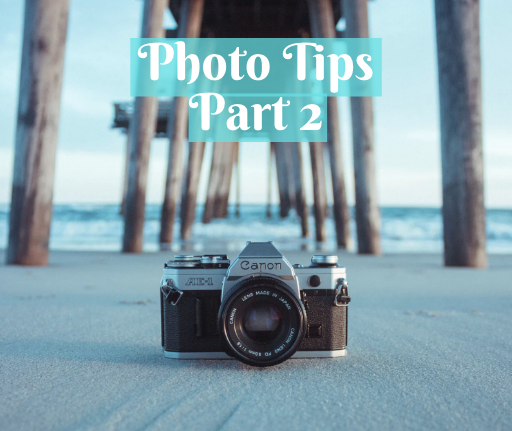
Would you like to make your photographs better? Check out this second part on useful tips for amateur photographers or anyone looking to make their images better without investing too much time or resources. For more check out part one of our quick tips to improve your photos.

In the last article we gave you lots of tips regarding subjects and posing but what about buildings? If you’re shooting a building, you’ll have to know when to make the best of natural lighting since this is how you’ll be shooting the exterior. For some looks, you’ll want to try shooting during the "golden hour" to get a soft, warm glow. For other’s, you’ll want to shoot during bright daylight to get vibrant, crisp images. You’ll also want to pull close-ups of the details of the building. People often forget these small details, so make sure to capture them! Take close-ups of framing on windows and doors, the patterned tile or anything that gives that particular building its unique character.

Unlike people, objects can become very dull, very fast in front of a camera. To combat this, it’s useful to look up patterns of composition, like the rule of thirds. Patterns like these make the overall image more dynamic. Another way for images to pop is to place them against a solid colored background. If you have a product like a white bottle, try putting it in front of a blue wall. This will make it stand out, but don’t be afraid of adding other objects into the shot. Having an image that is “too perfect” can make for a dull picture. You can add complimentary objects depending on the theme of the shoot to make it more interesting. Choose colors and objects that compliment what you are trying to showcase.

Keep in mind that because of the visual nature of photographs, colors play an essential role in the composition of an image. You’ll have to pay attention to the colors of the background, subjects, and overall frame to make sure that they complement each other. Many photographers plan their shoots according to complementary colors. They choose colors that are like, and that match so that the image feels like one piece. Keeping the same color palette makes the image more appealing yet straightforward.

Last but not least, post-production is a step you cannot miss. It’s quite simple to adjust elements that enhance the image like brightness and contrast. A lot of people forego this step without realizing how simple it is and what a big difference it makes. Don’t miss out on making your image stand out by simply adjusting some of the colors in post-production.

Lastly, there is no substitute for training. Mimic the photography styles you like and keep refining your skills until you are happy with the way your photos look. The more you practice, the better your images will be. But keep in mind that there is no replacing expertise. Professional photographers do incredible things behind a camera and in post-production that cannot be mimicked by the average Joe. Only someone who has spent countless hours learning their craft can achieve the highest quality images to showcase your business in the best light. That being said, it’s a good idea to continue practicing behind the camera until you’re able to hire a real professional.
The golden hour around sunrise or sunset gives soft warm light, but bright midday light can provide vibrant crisp images, depending on the look desired.
Use composition rules like the rule of thirds, place the object against a contrasting background, and add complementary props so the scene feels dynamic rather than staged.
Coordinating colors between subject, background, and props creates a unified visual palette, making the image feel intentional and appealing instead of chaotic or distracting.
Start by adjusting brightness, contrast, and color balance; even minor tweaks in these areas can significantly enhance clarity and mood without advanced software knowledge.
Shoot as regularly as possible, analyze your results, and replicate styles you admire; consistent hands-on experience is the fastest route to noticeable improvement.